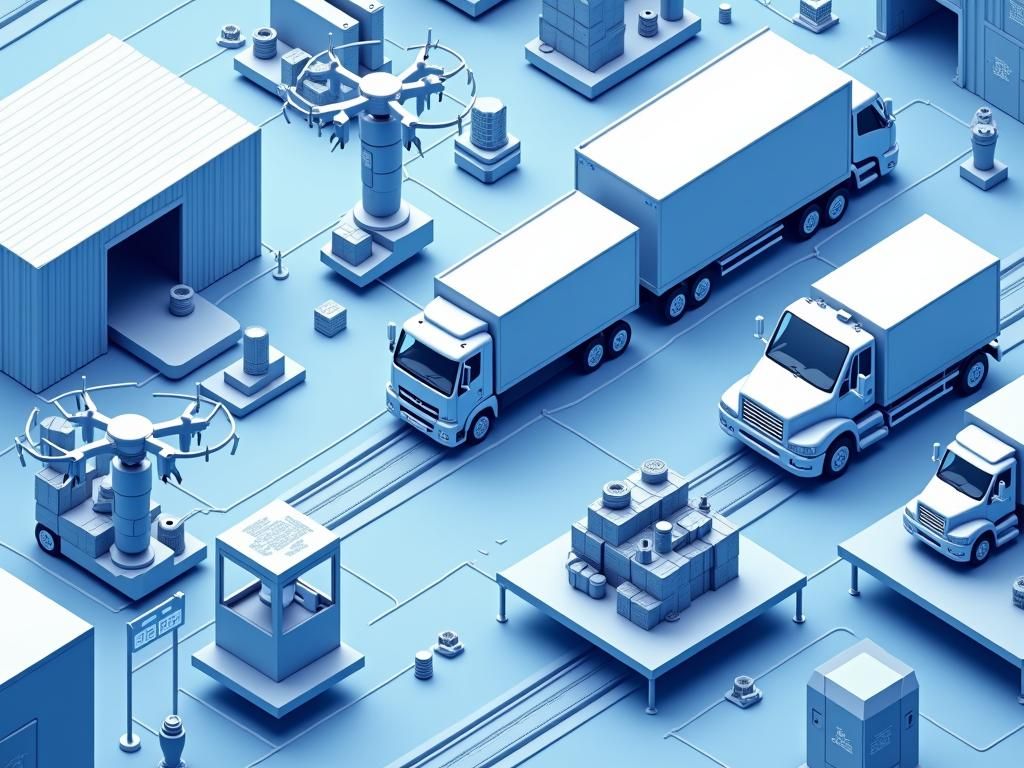Imagine being able to track the origin, production, and delivery of every 3D printed part with unprecedented precision, leveraging 3D printed part tracking to revolutionize supply chain management.
Introduction to Supply-Chain Tracking for 3D-Printed Parts
The advent of 3D printing has transformed the manufacturing landscape, enabling the rapid production of complex parts with reduced material waste and lower production costs. However, as the use of 3D-printed parts becomes more widespread, especially in critical industries like aerospace and healthcare, the need for robust supply-chain tracking mechanisms has become increasingly important. This is where supply-chain tracking for 3D-printed parts comes into play, offering a solution to ensure the authenticity, quality, and safety of these components throughout their lifecycle.
Challenges in Tracking 3D-Printed Parts
One of the significant challenges in tracking 3D-printed parts is the lack of standardization in their production. Unlike traditionally manufactured parts, which often have serial numbers or other identifying markers, 3D-printed parts may not have such clear identifiers, making them difficult to track. Moreover, the decentralized nature of 3D printing, with production potentially occurring in numerous small-scale facilities or even in-home printers, complicates the tracking process further. To address these challenges, companies are turning to advanced technologies like blockchain and RFID tagging, which can provide a secure and transparent way to monitor the movement of 3D-printed parts through the supply chain. For more insights into how blockchain can be applied in such scenarios, visit Discover more on TokenRobotic.
Technologies for Supply-Chain Tracking
Several technologies are being leveraged to enhance the tracking of 3D-printed parts, including:
- Blockchain Technology: By creating an immutable ledger, blockchain allows for the secure and transparent recording of every transaction related to a 3D-printed part, from its production to its delivery. This not only helps in tracking the part’s movement but also ensures its authenticity and quality.
- RFID (Radio Frequency Identification) Tagging: RFID tags can be attached to 3D-printed parts, enabling their identification and tracking as they move through the supply chain. This technology is particularly useful for parts that are stored in warehouses or transported over long distances.
- Internet of Things (IoT) Devices: IoT devices can monitor the condition and location of 3D-printed parts in real-time, providing valuable insights into their handling, storage, and transportation. This can help identify potential issues before they become major problems.
For a deeper understanding of how these technologies integrate with supply-chain management, it’s beneficial to explore resources like those found on McKinsey, which offers comprehensive analyses on the application of technology in supply chains.
Benefits of Effective Supply-Chain Tracking
Effective tracking of 3D-printed parts can have numerous benefits for manufacturers, suppliers, and end-users. Some of the key advantages include:
- Improved Quality Control: By closely monitoring the production and movement of 3D-printed parts, companies can ensure that these parts meet the required standards of quality and safety.
- Enhanced Supply Chain Transparency: Real-time tracking provides all stakeholders with a clear view of where parts are in the supply chain, reducing the risk of loss or theft and enabling more efficient logistics planning.
- Reduced Counterfeiting: The use of technologies like blockchain can significantly reduce the risk of counterfeit parts entering the supply chain, protecting both the manufacturers’ reputation and the safety of end-users.
Companies looking to implement such systems can find valuable guidance in publications like Harvard Business Review, which frequently publishes articles on innovation and technology in business.
Implementing Supply-Chain Tracking for 3D-Printed Parts
Implementing an effective supply-chain tracking system for 3D-printed parts requires careful planning and consideration of several factors, including the choice of technology, the scalability of the system, and the training of personnel. It’s also crucial to ensure that the system complies with relevant regulations and standards, such as those related to data privacy and product safety. For insights into regulatory compliance in the context of 3D printing and supply chain management, visiting Forbes can provide up-to-date information and analyses.
Future of Supply-Chain Tracking
The future of supply-chain tracking for 3D-printed parts is promising, with ongoing advancements in technology expected to further enhance the efficiency, security, and transparency of these systems. As more companies adopt these technologies, the potential for industry-wide standards and practices to emerge increases, which could significantly simplify the process of tracking 3D-printed parts across different supply chains. To stay updated on the latest developments in this field, following industry leaders and innovators, such as those featured on LinkedIn, can provide valuable insights and networking opportunities.
Conclusion
In conclusion, the tracking of 3D-printed parts through the supply chain is a complex challenge that requires the adoption of advanced technologies and strategic planning. By understanding the benefits and implementing effective tracking systems, companies can enhance the quality, safety, and reliability of their 3D-printed components. For those interested in exploring how innovative technologies like blockchain can support these efforts, visiting Discover more on TokenRobotic can offer a wealth of information and resources. As the 3D printing industry continues to grow and evolve, the importance of robust supply-chain tracking will only continue to increase, making it a critical area of focus for businesses looking to thrive in this exciting and rapidly changing landscape.
Take the first step towards revolutionizing your supply-chain management for 3D-printed parts. Visit TokenRobotic today to explore the possibilities and discover how you can leverage cutting-edge technology to enhance your operations and stay ahead of the competition.

